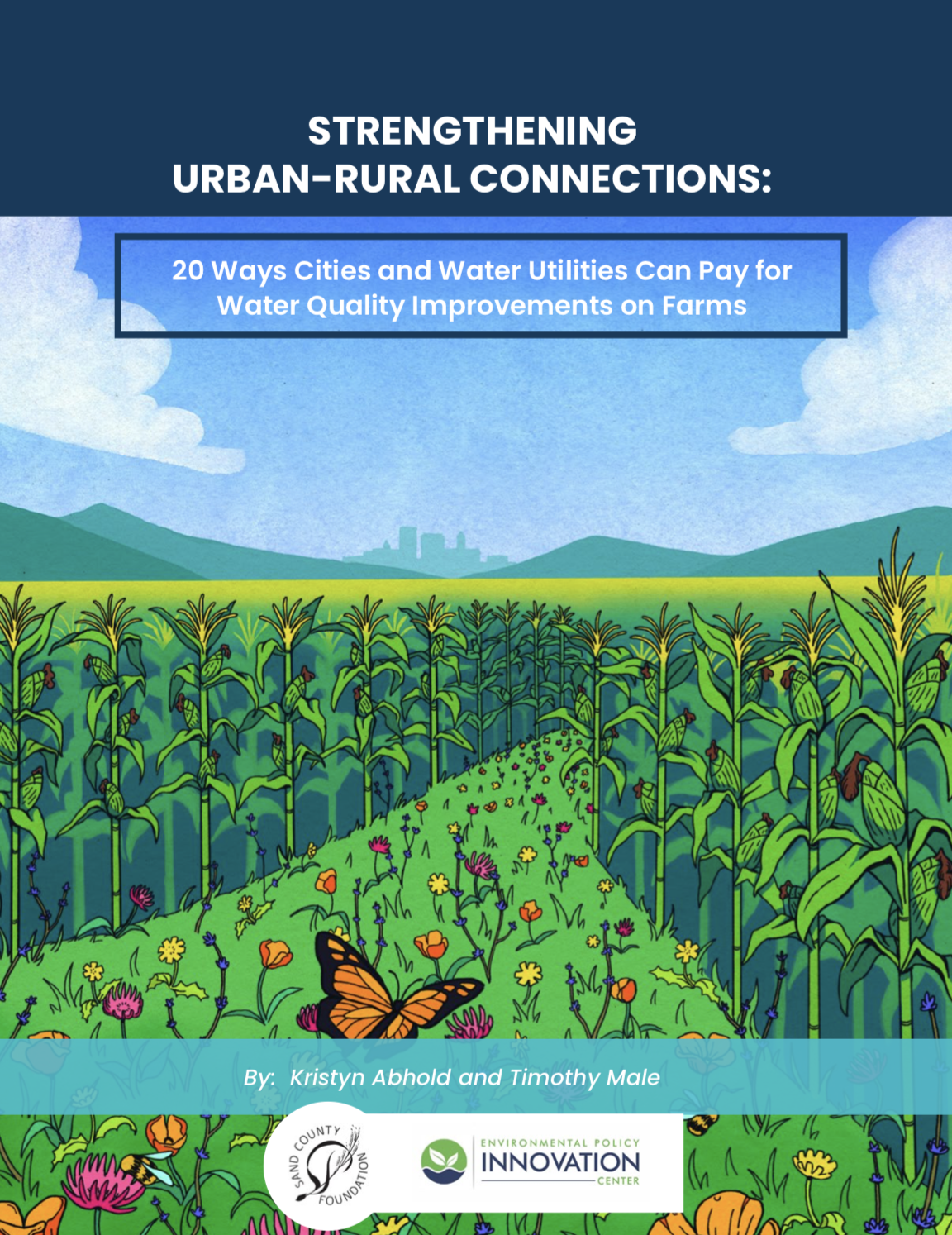We all want and need clean water, so Sand County Foundation and the Environmental Policy Innovation Center have successfully forged partnerships between municipalities in the Mississippi River Basin and farmers in their watershed to improve water quality and save taxpayer dollars.
Through specially-drafted agreements, these municipal/agricultural partnerships provide an avenue for municipal water treatment plants to achieve their clean water discharge requirements by investing in conservation practices on nearby farms. With funding from the Walton Family Foundation, we facilitated these partnerships in the Upper Midwest.
Thanks to these creative agreements, cities may be able to avoid making costly upgrades to their water treatment plants. In addition, improved water quality helps many drinking water utilities; and farm conservation practices often improve wildlife habitat, reduce flooding and improve the farm's bottom line.
As of December 2023, with Sand County Foundation's help a total of nine Iowa cities have signed memoranda of understanding with the state Department of Natural Resources to establish watershed partnerships. One city alone has generated over 420,000 pounds of creditable nitrogen reductions into waterways since signing their MOU.
Others are taking note. The State of Kansas adapted our Iowa template MOU to create its own version of watershed partnerships. Tom Stiles, Director of the Bureau of Water at the Kansas Department of Health and Environment, developed a way for stormwater permittees to get credit for work conducted outside cities boundaries but in their watershed, typically in a way that protects their drinking water. He discusses it in an interview we conducted.
Bring a watershed partnership to your community! Click here for our How-to Guide
Read about the outcomes:
Progress Report
Midwest Watershed Partnerships: Successes, Challenges, and Immediate Opportunities
Download a template agreement
Watch municipal-agricultural watershed success stories in:
Wisconsin
Iowa
Illinois
In the News:
Forest City and Mason City Partnering with Farmers on Water Quality Goals
Why Engage in Watershed Partnerships?
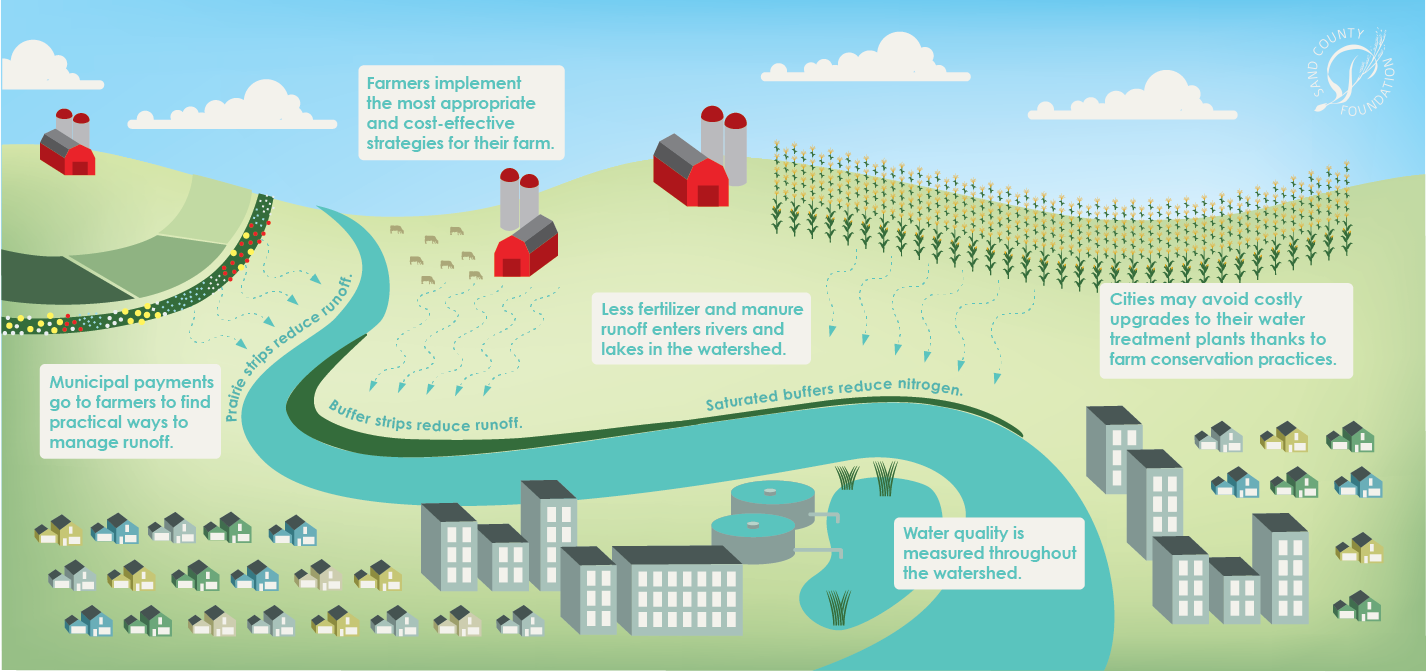
This how-to guide shows how to proliferate connections between point and nonpoint sources of nutrients to meet permit requirements and improve water quality. Click here to view it.
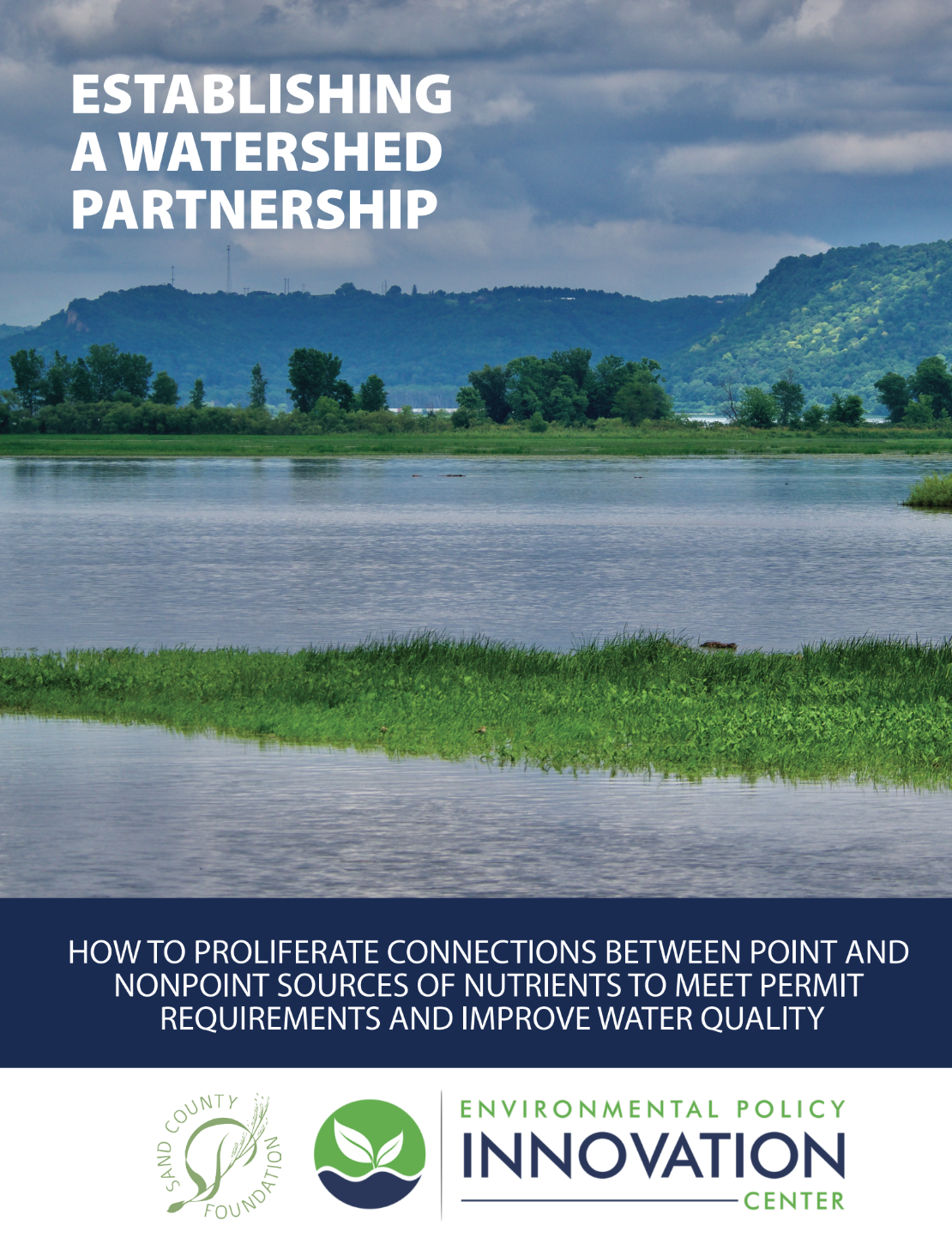
This reports shares the progress of nine Iowa municipalities that have signed Memoranda of Understanding with the state Department of Natural Resources to establish watershed partnerships. Click here to view it.
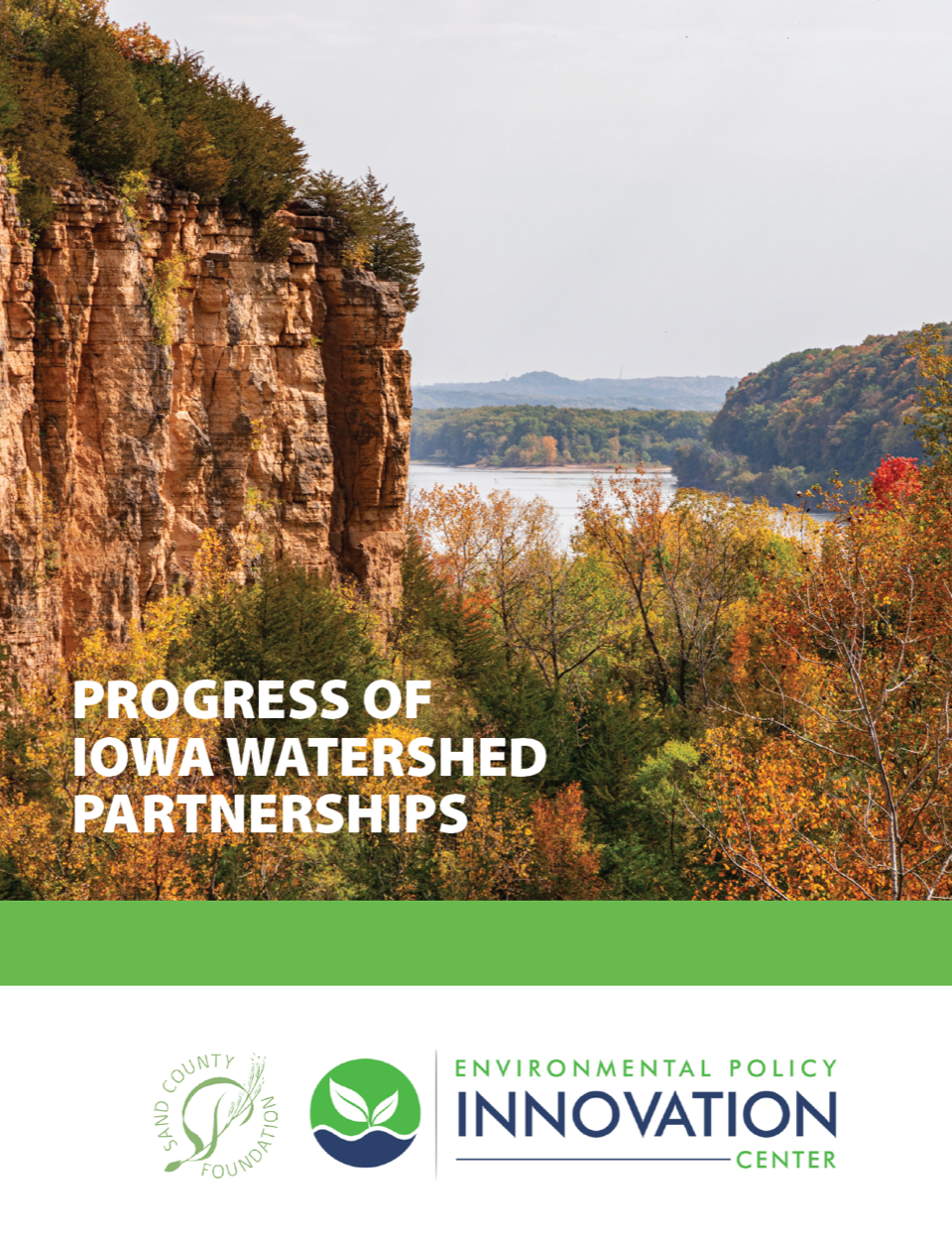
This guide breaks down the process into five clear steps, with examples to follow for each step. Focus your efforts on each step and the overwhelming concept will be more manageable: Identify the issue and project area; Develop your watershed plan; Cultivate partnerships; Engage the public; Establish your credits.
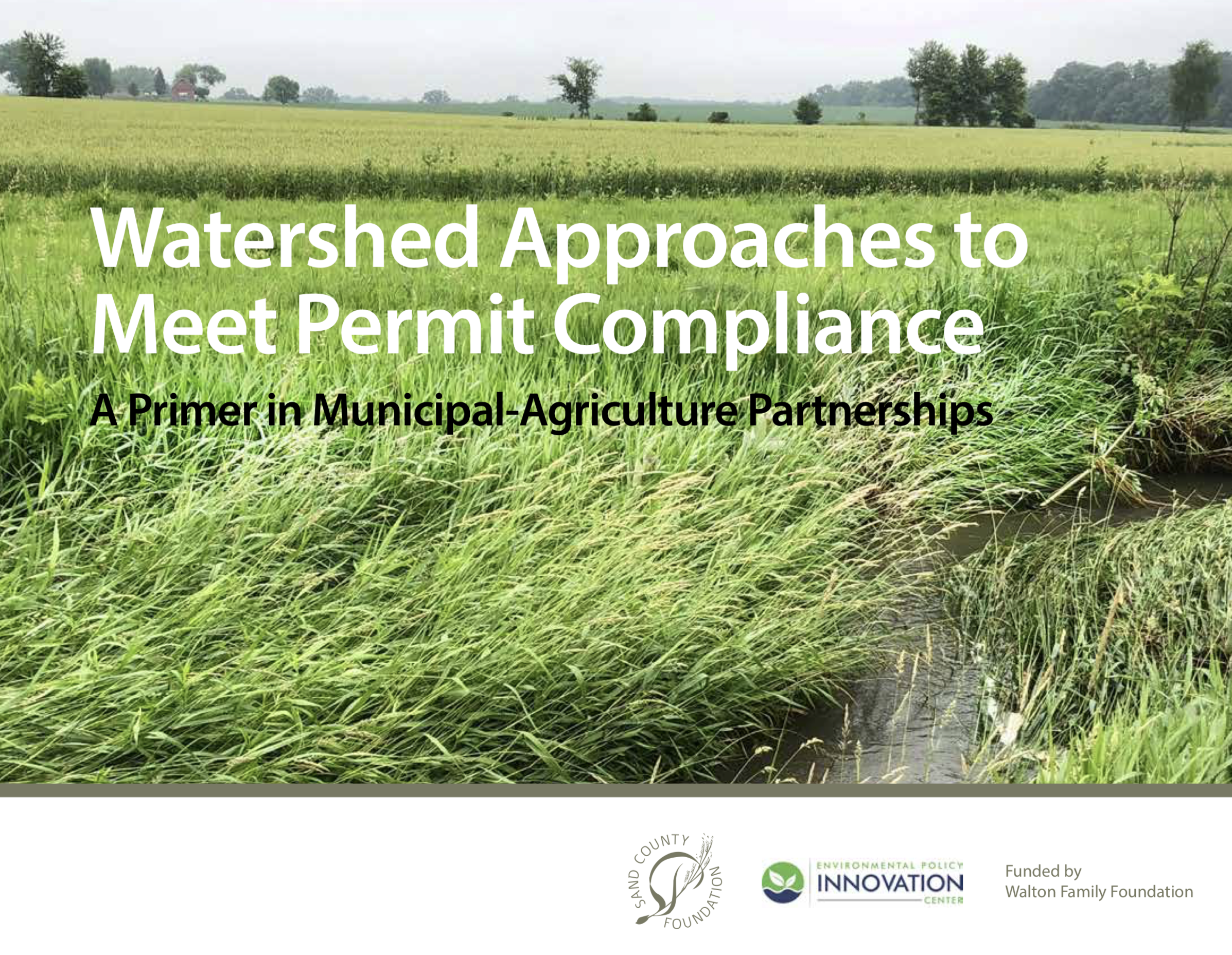
Voluntary partnerships with farmers, ranchers and other rural landowners provide some of the best possible opportunities to achieve nutrient goals collaboratively. Municipalities can incentivize landowners to implement conservation practices, and if regulators approve, the nutrient benefits from those practices can be counted toward the city or utility’s permit compliance goals.
This can be a win-win for urban and rural stakeholders within a shared watershed. Develop a partnership in your watershed with this step-by-step guide: Municipal-Agricultural Watershed Partnerships Project Guide. The guide's appendices can be found here. For the appendices table of contents, click here.
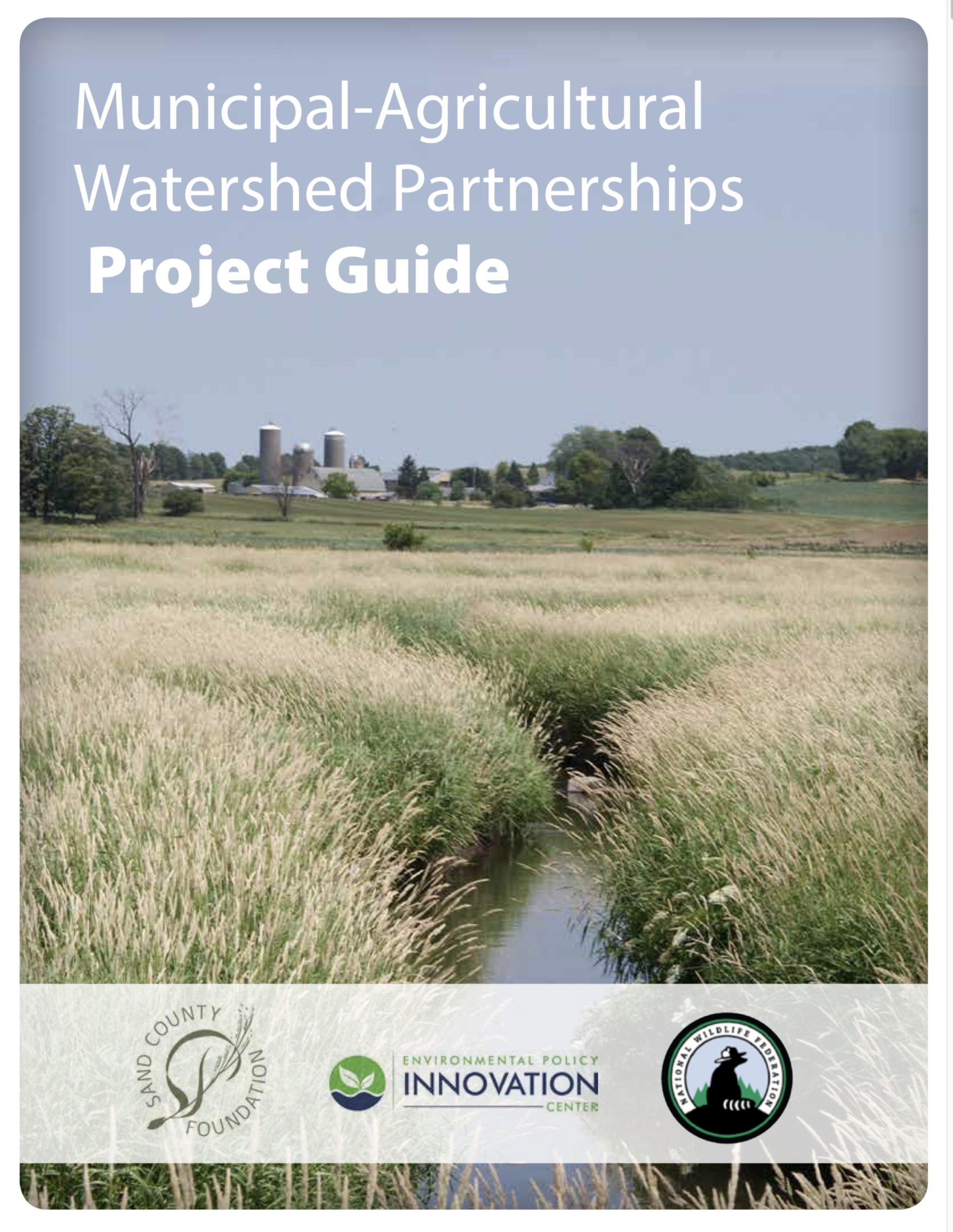
Successful frameworks for watershed collaboration need to be tailored to the unique physical and policy landscapes in Illinois and Iowa. A key step is a formal agreement between the state regulatory agency and a city to give the municipality time for its work in the watershed and certainty that the regulatory agency will correctly value the work with farmers that the city funds. We have identified 20 ways that cites and water utilities can pay for water quality improvements on farms. (View the report's executive summary here).
The federal EPA reaffirmed its support for this strategy that allows nutrient management improvements in one part of a watershed to be traded for use in another. Doing so will restore local water quality and begin to address the Gulf of Mexico’s dead zone.
